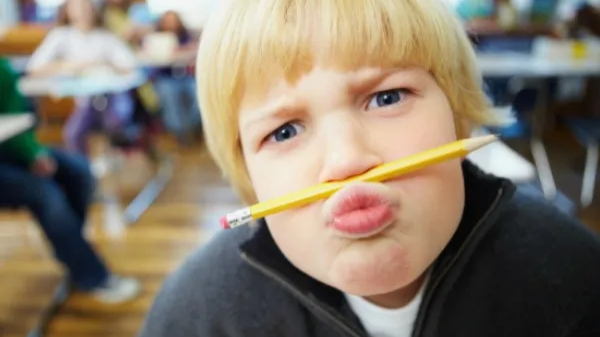“Why are we learning this?”
If you’re a teacher, especially of a Year 9 class, this will be a familiar question. The standard response is often, “Because it’s on the test.”
I remember asking the same thing back in the early 80s, “Sir, when will I ever use this theorem?” And truth be told, I have never used quadratic equations since the HSC exams.
Student disengagement has always been part of the classroom, but today the problem is accelerating. With the ubiquity of technology and the rapid rise of AI, young people are questioning why they should study algebra, the Second World War, or Hamlet when tools like ChatGPT can hand them the answers instantly.
Fair question.
When my own son was in Year 12 back in 2012, I caught him watching YouTube in his room one night.
“What are you doing there, son?” I asked.
“Well, Dad, this guy teaches physics way better than my teacher.”
Disengagement from learning is being intensified by the neurological effects of technology. Research shows that constant digital stimulation shortens attention spans, increases distractibility, and changes how young people process information (Christakis, 2019; Lissak, 2018). UNESCO’s 2023 Technology in Education report also warns that overreliance on screens can undermine focus, motivation, and persistence in learning. Sustained engagement becomes harder when brains are wired for instant feedback and rapid scrolling. Outdated pedagogy and learning approaches directly compete with how young people engage, learning and are stimulated through years of digital immersion.
And what happens when students are bored? Disengaged students of any age become behavioural challenges, and behavioural challenges further break down classroom relationships and further stretch already overworked teachers (OECD, 2020).
I would go so far as to say that disengagement is a root cause of the decline in academic standards in Australia. Engaged students learn, even in spite of poor teaching. Disengaged students don’t learn.
So how do we break the cycle? How do we re-engage young people in learning?
Three essentials for re-engagement
1. Relevance This is not a curriculum issue. The issue lies in delivery. Students must see the value of what they are learning. If content connects to their lives now (not just some distant future), curiosity follows (Fullan & Quinn, 2017).
2. Challenge Many disengaged students are simply bored. Tasks that lack stretch, complexity or purpose beyond assessment don’t capture attention. Young people rise to the challenge when activities are pitched at the right level of difficulty (Dweck, 2006).
3. Agency Society has shifted. Today’s young people are more aware of their rights, and more accustomed to having agency in other areas of life, than previous generations. Yet at school, they are often given very little say in their own learning. This mismatch fuels frustration and disengagement (OECD, 2021).
These three issues; relevance, challenge, and agency, can be addressed through the adoption of new pedagogies.
Beyond the hammer: choosing the right tools
Great teachers build a toolkit of pedagogies and know when to use each one. Unfortunately, fear-driven narratives from governments and the media have pushed many teachers toward narrow, one-size-fits-all approach such as direct and explicit teaching. While effective, it is just one tool of an highly accomplished teacher.
John Hattie’s Visible Learning (2009) found that direct and explicit teaching has an effect size of 0.59, not insignificant, but far below the top driver of student outcomes: collective teacher efficacy, with an effect size of 1.57.
The point is simple: you cannot fix disengagement with a hammer. You need a hook.
The power of open-ended challenges
One of the most powerful hooks is the open-ended challenge—a task without a predefined solution that demands creativity, critical thinking, and problem-solving. Open-ended challenges invite multiple approaches and outcomes. They encourage collaboration, exploration, and the kind of innovative thinking students instinctively enjoy (Lucas & Spencer, 2017).
Most importantly, when carefully designed, open-ended challenges address all three barriers to engagement:
- They make learning relevant.
- They provide intellectual challenge.
- They give students agency over how they approach the task.
Take, for example, a Year 7 science unit on photosynthesis, the challenge could be:
“Can two people look at the same evidence and reach different conclusions? Why or why not?”
Here, content knowledge becomes essential, but in service of a bigger, more engaging question. A well-conceived open-ended challenge is an excellent way to frame assessment.
A richer pedagogy mix
Open-ended challenges don’t replace other pedagogies; they enrich them. Direct and explicit teaching still matter, as do group tasks, projects, and inquiry-based methods. But when new approaches are added thoughtfully and curated with care, teachers can hook students into learning that is relevant, challenging, and meaningful.
If disengagement is the disease, then relevance, challenge, and agency are the cure. And open-ended challenges just might be the hook that gets students learning, not because it’s on the test, but because they’re genuinely curious.
Vivedus is underpinned by a pedagogical approach that is designed to make learning relevant and challenging and give students agency. And the best bit, the Vivedus Platform designs and curates the learning for a teacher, all tied to curriculum, at the click of a button.
References
Christakis, D. A. (2019). The challenges of defining and studying “digital addiction” in children. JAMA, 321(23), 2277–2278.
Dweck, C. (2006). Mindset: The New Psychology of Success. Random House.
Fullan, M., & Quinn, J. (2017). Coherence: Putting the Right Drivers in Action for Schools, Districts, and Systems. Corwin.
Hattie, J. (2009). Visible Learning: A Synthesis of Over 800 Meta-Analyses Relating to Achievement. Routledge.
Lissak, G. (2018). Adverse physiological and psychological effects of screen time on children and adolescents: Literature review and case study. Environmental Research, 164, 149–157.
Lucas, B., & Spencer, E. (2017). Teaching Creative Thinking. Crown House.
OECD (2020). Overloaded and Underprepared? Strategies for Stronger Student Engagement. OECD Publishing.
OECD (2021). Student Agency for 2030. OECD Publishing.
UNESCO (2023). Technology in Education: A Tool on Whose Terms? UNESCO.
